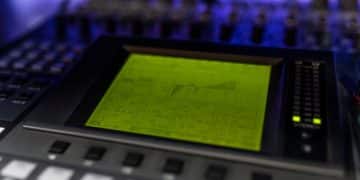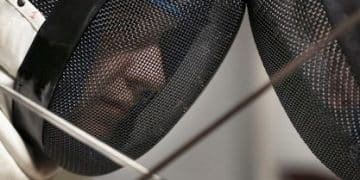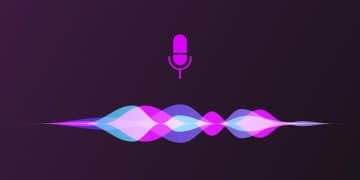Podcast Equipment Upgrade: Is a $500 Microphone Worth It?
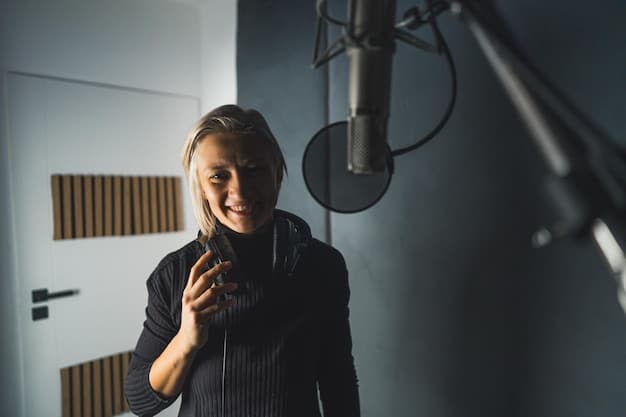
Upgrading your podcast equipment with a new $500 microphone can significantly improve audio quality, but the value depends on your current setup, podcast goals, and target audience in the US market.
Is it time to elevate your podcast with a new microphone? Investing $500 in podcasting equipment, specifically a microphone, is a decision many US-based podcasters face. Let’s explore whether this podcast equipment upgrade: Is it worth investing $500 in a new microphone for your US podcast?
Why Upgrade Your Podcast Microphone?
Upgrading your podcast microphone can dramatically enhance the quality of your audio. High-quality audio can capture nuances in your voice, reduce background noise, and create a more professional and engaging listening experience. But why is this important, and when should you consider an upgrade?
Improved Audio Quality
A quality microphone captures a wider range of frequencies, resulting in a fuller, richer sound. This is especially crucial if your content relies heavily on audio nuances, such as ASMR podcasts or detailed storytelling.
Reduced Background Noise
Better microphones often come with superior noise rejection capabilities. This means less background hum, keyboard clicks, and other distractions that can detract from the listener’s experience.

Enhanced Professionalism
Clear, crisp audio lends credibility to your podcast. Listeners are more likely to take you seriously and stay engaged when the audio quality is top-notch.
- Clarity: A better frequency response captures your voice accurately.
- Listener Retention: High-quality audio keeps listeners engaged.
- Credibility: Professional sound boosts your podcast’s reputation.
Upgrading your microphone can be a game-changer for your podcast. Improved audio quality, reduced background noise, and enhanced professionalism are all compelling reasons to consider investing in a new microphone.
Assessing Your Current Equipment
Before you consider splurging on a new microphone, it’s crucial to assess your current podcasting equipment. Understanding the limitations of your existing setup can help you make an informed decision about whether a $500 microphone is a worthwhile investment.
Identifying Weak Links
Start by identifying the weakest link in your audio chain. Is it your microphone, your audio interface, or your recording environment? Sometimes, addressing other issues can yield significant improvements without needing a new microphone.
Evaluating Recording Environment
Your recording environment plays a significant role in audio quality. A highly reflective room can introduce echoes and unwanted reverb. Consider acoustic treatments before upgrading your microphone.
Reviewing Current Microphone Specs
Examine the technical specifications of your current microphone. What is its frequency response? What type of polar pattern does it use? Understanding these details will help you compare it to potential upgrades.
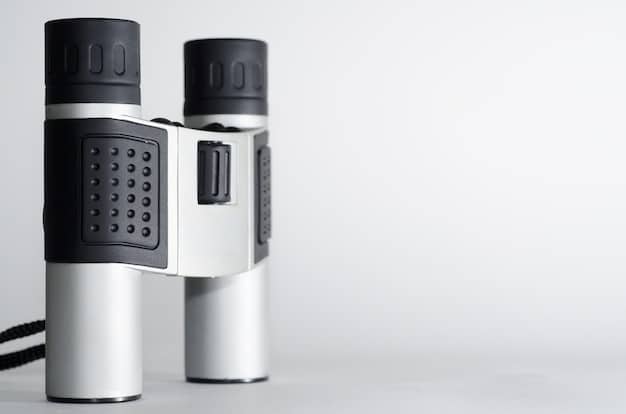
Take the time to thoroughly understand your current equipment and recording environment. This assessment will provide valuable insights and help you determine whether a $500 microphone is the right solution.
Understanding Microphone Types and Features
Microphones aren’t one-size-fits-all; they come in various types, each with its own unique characteristics and applications. Grasping the fundamentals of microphone types and features will better inform your decision on whether to invest $500 in a new microphone.
Dynamic vs. Condenser Microphones
Dynamic mics are rugged and great at handling high sound pressure levels, making them ideal for recording loud instruments or vocals. Condenser mics are more sensitive and capture a wider frequency range, perfect for studio recording.
Polar Patterns
Polar patterns describe how a microphone picks up sound from different directions. Common patterns include cardioid (picks up sound from the front), omnidirectional (picks up sound from all directions), and bidirectional (picks up sound from the front and back).
Connectivity: USB vs. XLR
USB microphones are easy to use and connect directly to your computer, making them a great option for beginners. XLR microphones require an audio interface but offer better sound quality and flexibility.
- Dynamic Mics: Durable and handle high sound pressure levels.
- Condenser Mics: Sensitive with a wide frequency range.
- Polar Patterns: Dictate directionality of sound pickup.
By understanding the different types of microphones, their polar patterns, and connectivity options, you can make a more informed decision about which microphone best suits your needs and whether a $500 investment is justified.
Benefits of Investing in a $500 Microphone
Spending $500 on a microphone is no small decision. Before diving into the options, it’s essential to weigh the specific benefits a microphone in this price range offers compared to less expensive alternatives.
Superior Sound Quality
Microphones in the $500 range usually boast higher quality components and more precise manufacturing. This translates to a cleaner, more detailed sound with a wider dynamic range.
Durability and Longevity
A pricier microphone often means better build quality and more durable materials. Investing in a $500 microphone can mean years of reliable service, making it a smarter long-term investment.
Advanced Features
Microphones in this price range often come with advanced features such as adjustable polar patterns, high-pass filters, and pad switches. These features provide greater control and flexibility in different recording scenarios.
The benefits of investing in a $500 microphone are clear: superior sound quality, durability, and advanced features that enhance your podcasting capabilities. These advantages can contribute to a more professional and polished final product.
Alternatives to a $500 Microphone
While a $500 microphone offers many benefits, it’s essential to consider alternative options. Sometimes, you can achieve significant improvements without spending that much money.
Acoustic Treatments
Investing in acoustic panels, bass traps, or even DIY solutions can dramatically improve the sound of your recording environment. Reducing reverb and echoes can make your existing microphone sound much better.
Audio Interface or Preamp
If you’re using an XLR microphone, upgrading your audio interface or preamp can significantly improve the signal quality going into your computer. A better preamp can add warmth and clarity to your recordings.
Software Enhancements
Explore audio editing software like Audacity or Adobe Audition. Noise reduction, compression, and EQ can help polish your audio. This can make even a budget microphone sound more professional.
- Acoustic Treatment: Improve recording environment.
- Audio Interface: Enhance signal quality.
- Software Editing: Polish your audio.
Making the Final Decision
Deciding whether to invest in a $500 microphone requires careful consideration of your specific needs, budget, and potential return on investment. By weighing the pros and cons, you can make an informed decision that aligns with your podcasting goals.
Consider Your Budget
Assess your financial situation and determine how much you can comfortably spend on a microphone. Don’t overextend yourself if it means sacrificing other essential podcasting expenses.
Assess Future Needs
Think about your podcasting goals. Do you plan to expand your content, interview guests, or monetize your podcast? A higher-quality microphone can be a valuable investment for future growth.
Read Reviews and Recommendations
Dive into online reviews, watch YouTube tutorials, and seek recommendations from fellow podcasters. Gather as much information as possible to make an educated decision.
| Key Aspect | Brief Description |
|---|---|
| 🎤 Sound Quality | A $500 mic offers clearer, richer audio for a professional sound. |
| 🛠️ Alternatives | Consider acoustic treatments or software to improve audio without a pricey mic. |
| 💰 Budget | Ensure the investment aligns with your financial situation and podcasting goals. |
| 🎧 Future Needs | Think about future podcast growth and equipment needs to justify the investment. |
FAQ
▼
While a $500 microphone typically has better noise rejection, it won’t eliminate all background noise. Acoustic treatment of your recording space is still important.
▼
Yes, audio editing software can significantly improve the sound of a cheaper microphone through noise reduction, equalization, and compression.
▼
XLR microphones generally offer higher sound quality and require an audio interface, while USB microphones are more convenient for beginners.
▼
The recording environment is crucial. A room with too much reverb or echo can negatively impact your audio, regardless of microphone quality.
▼
Key features include frequency response, polar pattern (cardioid is common for podcasting), sensitivity, and the ability to handle high sound pressure levels.
Conclusion
Ultimately, deciding whether to invest $500 in a new microphone for your US podcast depends on your specific needs and circumstances. Assess your current setup, consider alternatives, and weigh the potential benefits against your budget to make the best choice for your podcast’s success.
